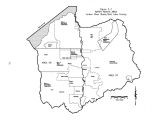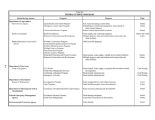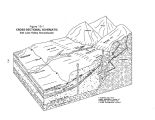| OCR Text |
Show land uses that can occur within the designated corridor, and requires developers to seek approval from Salt Lake County Flood Control. This effort follows closely on the heels of the county Jordan River Stability Study, published in December 1992. That study defined the Jordan River as " continually undergoing the processes of bank erosion, long- term channel bed degradation, bridge scour, sediment deposition and meander migration." In addition to reducing the flooding potential along the river, the establishment of a meander corridor should have a very positive impact upon wildlife and the environment, as the river is allowed to take a more natural sinuous course and the stream banks are allowed to stabilize. Many of the cities that border the Jordan River ( Salt Lake City, Midvale, Murray, Taylorsville, West Jordan, West Valley City, South Jordan, Riverton, and Bluffdale), are developing their own management plans for the Jordan River within their city boundaries. Many of these city plans reflect the county's efforts to establish a meander corridor and include parkways and trails. Existing wetlands and riparian habitat are being lost or impacted due to development. The Division of Wildlife Resources should identify wetlands and riparian areas with significant values to aid in their protection and preservation. 2.15 Water- Related Recreation The purpose of this section is to describe the Jordan River Basin water- related recreational resources, identify problems and needs, and offer some recommendations. Aside from the Jordan River and the Great Salt Lake, Salt Lake County has no major lakes, rivers or reservoirs. Consequently, there are limited opportunities for recreational activities involving direct contact with water. At the north end of the county, the Great Salt Lake represents the largest recreational water attraction. Ever since the first settlers entered Salt Lake Valley, the Great Salt Lake has been a source of curiosity and a recreational attraction. Current recreational facilities on Great Salt Lake within Salt Lake County include the Great Salt Lake State Park and Saltair Resort, a privately developed facility. Other water- related recreational activities include several privately owned and operated hunting clubs, a significant number of county- and city- owned swimming pools, as well as several privately- owned and operated water theme parks and swimming pools. Quite a few city and county parks offer picnicking and other day- use activities in the immediate proximity to ponds, small lakes and streams. The skiing industry is a major recreation activity in the Jordan River Basin that has a favorable economic impact upon the entire state. The Utah Legislature created in 1957 what is today the Division of Parks and Recreation. Lawmakers instructed the division to develop parks and recreation areas and to preserve and protect historical sites and scenic treasures. The boating program was added in 1959 and the off- highway vehicle program started in 1971. The major objectives for the state parks system are: 1) Provide a broad spectrum of high quality parks and recreational resources; 2) enhance the economic vitality of the state through increased tourist and vacationist traffic; 3) enforce state boating and off- highway vehicle laws; 4) regulate, protect and interpret the natural and historic resources in the park system; and 5) provide technical assistance and matching grants for outdoor recreation development. The Division of Parks and Recreation provides matching grants for riverway and non- motorized trail enhancement. This program leverages state dollars with local doliars, requiring 50 percent local match. Since 1991, 260 requests totaling $ 10.2 million have been received statewide. To date, 107 projects have been awarded funds totaling $ 3.2 million. In the Jordan River Basin since 1991, these funds, amounting to more than $ 250,000, have been directed primarily at developing the Jordan River Parkway. Within the Utah State Comprehensive Outdoor Recreation Planning ( SCORP) process, surveys are conducted to determine the priority of recreational and environmental issues. The most desirable recreation activities are either water- based or water- related. Salt Lake County has passed an ordinance establishing a Jordan River Meander Corridor. The ordinance would establish the boundaries of the Jordan River's natural meander pattern, and set limits on the types of development and land uses that can occur within the designated corridor. In addition to addressing flooding concerns, water quality issues and having a positive impact upon wildlife, the creation of a meander corridor lends itself very well to the establishment of recreational facilities as one of the designated uses. 2- 7 |

















































































































































































